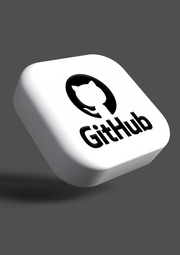10 Ways Teachers Can Use GitHub in the Classroom
Git Hub is revolutionizing education by providing teachers with a powerful platform to create and manage virtual classrooms. With its plethora of features and easy-to-use tools, teachers can manage projects and assignments and easily collaborate and share resources with their students.
What Is GitHub?
GitHub is an open-source software that allows people to work on projects together from any location. For educators, it is also helpful in sharing teaching materials across different courses, allowing collaboration between teachers, and making it easier to work on lessons together without constantly switching programs.
This article will explore ten ways teachers can use GitHub in the classroom to make teaching more collaborative, efficient, and fun. So read on as we dive into how teachers everywhere should take advantage of its capabilities.
10 Ways Teachers Can Use GitHub in the Classroom
Manage Classrooms
GitHub Classroom provides teachers with a powerful tool for managing their courses. Through the classroom, teachers can create multiple student rosters, which become the foundation of the course itself. With each roster, teachers can assign assignments, track student progress, and review and grade their work.
In addition, they can track their students’ contributions within their repositories, giving them better insights into how each student is doing in their course.
Starter Assignment
Teachers can use the Git & GitHub starter assignment to give students an overview of key concepts related to Git and GitHub. The course is designed to allow students to quickly get familiarized with the topics and develop a better understanding of its fundamentals.
It covers several essential elements, including version control with Git, repository collaboration on GitHub, real-world application of the concepts, and other less-discussed topics, such as techniques for debugging code along with best security practices.
The course also provides helpful links to tutorials and additional resources that teachers can use to introduce more complex topics within software development. The starter assignment simplifies the ongoing learning experience by giving students an effective platform for grasping essential knowledge about Git and GitHub.
Create Individual Assignment
Teachers can use GitHub Classroom to facilitate the creation of individual assignments. They can also determine each assignment repository’s visibility and access permissions by assigning a title and setting an optional deadline.
Grading can also be automated, streamlining the assessment process for improved accuracy. In addition, instructors can employ starter codes, documentation, tests, and other resources to support student efforts on their assignments.
A dedicated space to discuss each assignment with a student further enhances GitHub Classroom’s appeal as an easy-to-navigate educator tool that facilitates comprehensive educational experiences for teachers and learners alike.
Create Group Assignment
Using GitHub Classroom, teachers can easily create collaborative assignments for their courses. Once a student accepts the assignment, they have the flexibility to create or join a team of fellow students. The teams created for each assignment are saved as a set and can be reused for future assignments.
For added convenience, teachers can also provide starter codes, documentation, tests, and other resources to offer students a head start on the project by creating a template repository. This makes it simple and convenient for teachers to administer collaborative assignments through GitHub Classroom.
Edit an Assignment
Teachers can use GitHub to easily edit existing assignments, providing them with limitless opportunities to modify the assignment in a way that best fits their course needs. With the help of GitHub, they can edit such things as submission deadlines and auto-grading tests from previously created assignments.
Additionally, teachers can add bulk or single tasks to an assignment and a grading rubric for individual students.
Reuse an Assignment
Reusing existing assignments is a great way to save time and energy as a teacher, especially if you have multiple classrooms in different organizations. GitHub Classroom can help by copying the assignment wherever you need it, including any other classrooms.
Not only will the assignment contain all original details like the name, source repository, auto-grading test, and preferred editor, but it will also include a template repository and its contents from the target organization.
You can easily make changes to your copied assignment post-copy, allowing maximum customization and flexibility for your students. Remember that you have no control over the preferred editor setting, though!
Create an Assignment From a Template Repository
Creating an assignment from a template efficiently provides your students with documentation, starter codes, and other resources. All you need is to use the template repository as the starter code for your assignment on GitHub Classroom.
Depending on the visibility setting of the repository, either your organization must own the template repository, or it must be public for it to be used in the creation of the assignment.
Auto-Grading
Assessment becomes automated by designing tests to run in the assignment repository, enabling quick and efficient processing of assignments.
All teachers need to do is set up the tests for an assignment. Whenever students submit their work on GitHub Classroom, the configured tests will automatically run in a Linux environment containing the latest submission.
The student can then view the results of the tests and make necessary changes before submitting them again.
Leave Feedback With Pull Requests
Providing feedback to students in a timely, structured manner can have a positive impact on their learning outcomes. To deliver meaningful and constructive feedback, GitHub Classroom offers the ability to create special pull requests. This allows instructors to easily add comments, questions, annotations, and code snippets directly within the repository for each assignment.
Seamless integration with the Student Appointments feature allows for discussions about assignment submissions where everyone involved can see the context within which conversations are held. With an organized workflow, instructors can spend more time engaging with students and less time managing communication logistics.
Register and Connect to an LMS Course
Registering and connecting an LMS course to GitHub Classroom is a simple process that requires only a few steps. First, an administrator must configure the LMS instance to allow for integration with GitHub Classroom. Then, the administrator initiates the OAuth authentication handshake by registering their LMS with GitHub Classroom.
This registration only needs to take place once, but it allows any teacher using the same LMS instance to sync their courses to classrooms. After these preliminary steps are complete, teachers can import rosters of student identifiers from the LMS and into their desired classrooms.
Conclusion
Overall, GitHub provides an effective solution for managing educational resources, which saves time and helps streamline the learning process for all involved.
A helpful video demonstration is also provided on their website for all features as a guide for further instruction.





